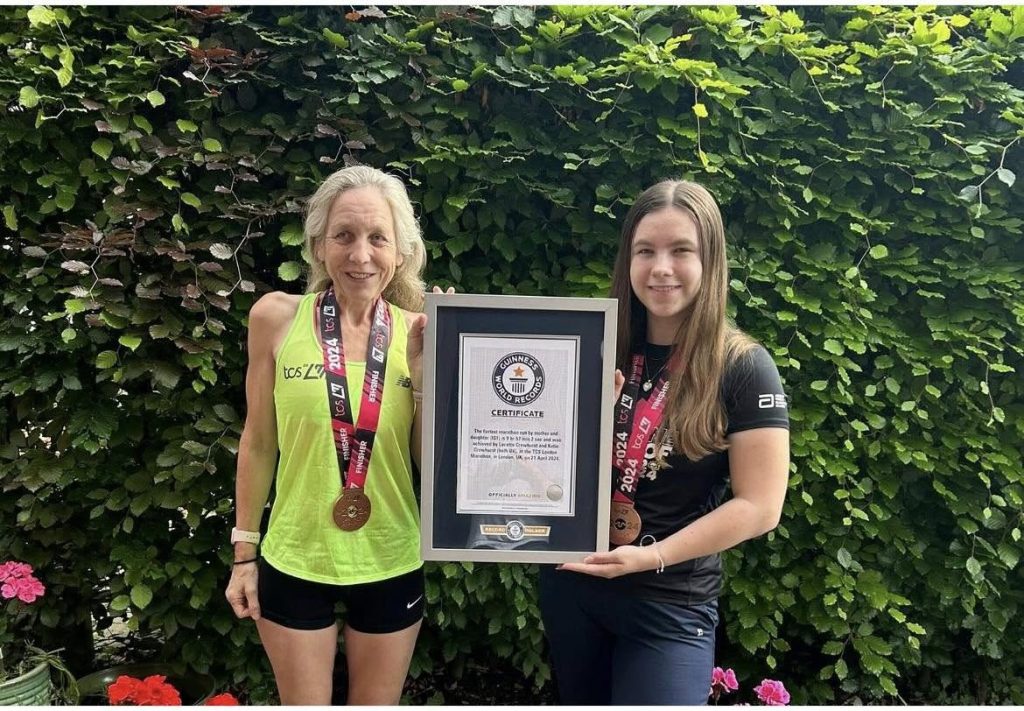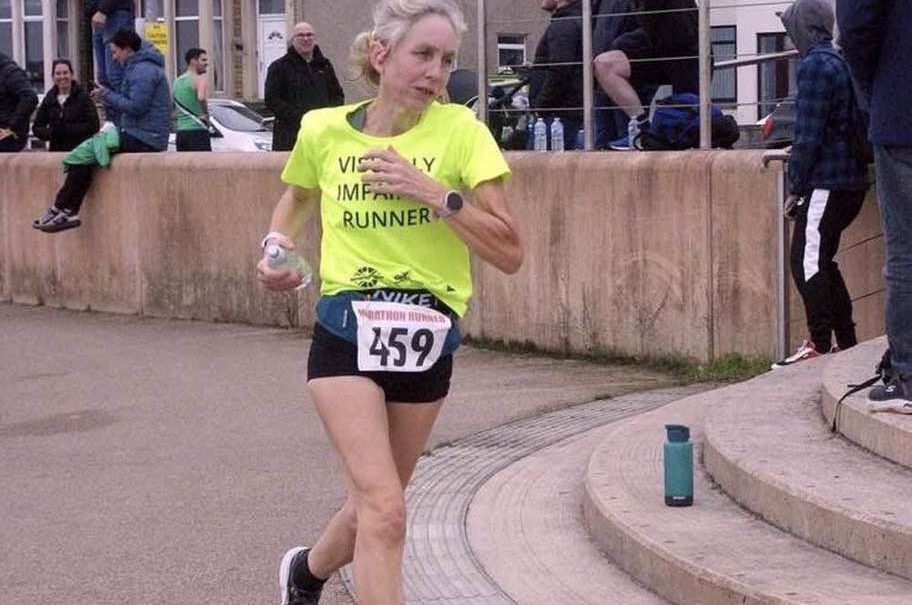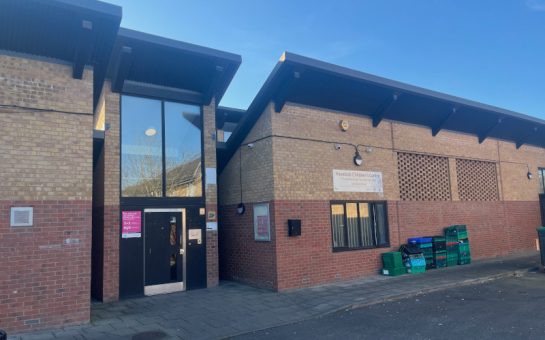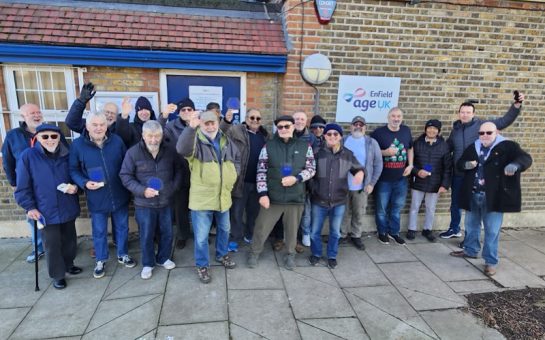Those who know a thing or two about the logistics of the London Marathon will be aware there are several different modes of entry, each with their own set of quotas and caveats.
They are the general ballot, second-chance ballot, elite wheelchair, disability places, charity places, championship entry and good-for-age entry.
Visually-impaired runner Lucy Crowhurst 51, declined both a disability and charity position at this year’s London Marathon, leaving her with few options, after initially trying her luck in the main ballot to no avail.
Yet she ultimately qualified by achieving something rather spectacular, surpassing the good-for-age entry standards which were designed for mainstream able-bodied athletes.
Crowhurst said: “I didn’t want to just be given a place.
“How would they decide which disabled person deserved a place more than another?
“I felt that I’d rather earn my place, just like my able-bodied counterparts, even if that meant bringing myself up to scratch with mainstream athletic standards since there’s no para equivalence.”
Achieving a good-for-age standard does not give rise to automatic entry, due to to places being restricted, but it does provide an additional entry point for runners without having to go through a ballot which some eligible athletes will still enter to maximise their chances of gaining a place.
Crowhurst met the over-50s standard of 3hrs 55mins by some margin, boasting a personal best of 3hrs 40mins.
There is no good-for-age disability equivalent, in part because of the many sub-categories and sub-divisions within parasport which would make it hard to standardise in terms of assessing and determining relevant cut-off points.
Crowhurst wrote to the London Marathon organisers pointing out that the other major world marathons had paraqualification standards but London marathon responded by saying that they felt it was fairer to mainain a guaranteed 250 disabled places plus a special ballot where entries exceeds this figure.
Last year, she ran the London marathon by gaining a charity place and although not choosing that route this year, she still aims to raise some money for the Guide Dogs For The Blind Association.
A minimum of £2,500 needs to be raised in advance of the marathon to gain a charity spot, so whatever funds are raised this year will be a bonus.
Crowhurst said: “My charity-backed entry from last year’s London marathon was a brilliant way for me to give back to organisations that had helped me and other visually-impaired people over the years.
“I just didn’t feel right about taking another charity spot again as it’d involve asking my same small circle of friends for money again.”
Last year, Crowhurst ran a combined mother-and-daughter visually-impaired world record of 9hrs 52mins 2secs with Katie Crowhurst, which was based on their composite times.
The 21-year-old was the 2022 Commonwealth paratriathlon champion and will again be running this year’s London Marathon, with the duo aiming to break their record.
Katie said: “I’m excited to run London again this year and try and break our world record.”

Unlike many visually-impaired runners, Lucy always runs untethered and relies solely on the voice of her guide runner to direct her, as the idea of running tethered to a guide has never appealed to her.
Crowhurst will be guided and paced by Team GB 1500m masters athlete Peter Flewitt and the 52-year-old will be raising funds for the Meadow House Hospice in Ealing.
Middle-distance specialist Flewitt competed for Great Britain last summer at the World Masters Championships, and is excited and motivated by this fresh challenge and stepping back up to marathon distance.
He said: “After running 2hrs 38mins in the marathon myself many moons ago, I didn’t think that I had another marathon in me until I got approached by a visually-impaired veteran athlete in her 50s asking me to pace her to a Guinness world record.
“I was excited by this new challenge as it would add a fresh spin to the otherwise tedious marathon distance.
“I was actually approached by her last year, but I had to decline as my training at the time was on the opposite end of the scale as I was preparing for the World Masters 1500m champs.”
The pair rarely train together due to geographical distance, with Flewitt based in Ealing and Crowhurst based in Maidenhead, but meet once or twice or twice a month, including at the recent Wokingham half-marathon, to get used to the technical logistics of racing without conventional aids.
Remarkably, Crowhurst only took up the sport two years ago to counter her fear of ageing, as well as being inspired by her daughter’s success in elite parasport.
She said: “In Feb 2023, I was a non-runner, couldn’t run more than three paces without being utterly worn out.
“But 2023 was the year I would turn 50 and I didn’t want to be fat and unfit so I set myself the challenge of running 5km [3.1 miles] a day which worked out at around 160 times around my back garden.
“Being registered blind, this is the safest way for me to run without a guide, even if it’s much more monotonous than completing a scenic route.
“I eventually built-up my training until I was ready to take on the marathon distance.”
To make a donation to either of their charities, visit Crowhurst’s fundraising page for Guide Dogs or Flewitt’s fundraising page for Meadow House Hospice.
Picture credit: Sprint Finish Photography, used with permission





Join the discussion